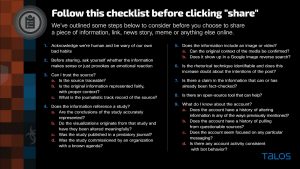In 2024, voters in more than 60 countries—representing 4 billion people—will cast ballots. Some of the elections are far-reaching—such as the upcoming European Parliament elections, which will span 27 countries from June 6 to 9. This year, for the first time, Cisco has teamed up with the European Parliament for their “Use Your Vote” campaign to encourage citizens to exercise their civic duty. In an era where digital threats are increasingly sophisticated, ensuring secure and trustworthy elections requires a collective effort from all stakeholders—companies, governments, and voters alike. Each group plays a critical role in bolstering cybersecurity and safeguarding the democratic process.
Tech advancements and public-private collaboration will make election systems more secure than ever before.
Looking at election integrity and thinking about how we secure public trust and confidence in our democratic system, there is a theme we are seeing emerge in democracies across the globe: cyber adversaries are innovating, and there are concerted campaigns by malicious actors to erode trust in the process.
Even as we harness the power of new technologies such as AI to bolster cybersecurity, malicious actors are trying to find ways to tip the scale in their favor. As a result, governments must secure elections as best as possible by prioritizing cybersecurity and implementing comprehensive solutions. This includes replacing equipment that is too antiquated to secure, investing in network resilience, adopting zero-trust architectures, allocating adequate funding to enhance cybersecurity infrastructure, and, where appropriate, shifting to cloud-based IT solutions.
While some aspects of election systems may deliberately not be networked, like voting machines, election infrastructure extends far beyond the voting booth. It can include endpoints, applications, data and users at the network’s edge and in polling stations as well as networks and information systems of electoral officials and agencies with oversight responsibilities for elections. It’s a lot of moving parts that need to be protected against cyberattacks—from election volunteers using their own smart devices to the email, control systems, and electoral registers overseen by authorities. Advanced cybersecurity controls must be integrated into the election infrastructure itself, not bolted on later.
Information sharing related to cybersecurity risks and incidents is playing a valuable role in our collective cyber resilience, and governments globally are exploring how to tear down silos in a way that embraces collaboration. For example, the U.S. Cybersecurity and Infrastructure Security Agency created the Joint Cyber Defense Collaborative (JCDC), which includes a host of private sector cyber players like Cisco and Splunk. The JCDC facilitates information sharing and synchronized efforts to address many cyber challenges, including election security. These public-private partnerships can enable faster responses to emerging threats and improve the overall resilience of election systems.

Voters must prioritize information hygiene.
Election officials worldwide are putting recommendations into practice to counter mis/disinformation and better ensure the integrity and fairness of our electoral contests. But voters themselves are also a crucial link in the chain of election security. While companies and governments play significant roles, individual vigilance and proactive measures by voters can have a substantial and positive impact.
In addition to informed participation and engaging in the democratic process, voters in today’s social media-driven world, must also practice information hygiene to help prevent and reduce the spread of mis/disinformation. Fortunately, there are resources to help voters identify and avoid disinformation campaigns. For example, Cisco’s Talos Intelligence Group—one of the world’s largest commercial threat intelligence teams—has established a checklist before clicking “share.” And looking to the upcoming EU elections, the European Parliament also has voter resources dedicated to combatting disinformation.
A Unified Approach.
Election security is not the sole responsibility of any one group. Instead, it demands a unified, multi-faceted approach where industry, governments, civil society, and voters play their part—through technological innovation, regulatory enforcement, informed participation, and collaboration. This collective effort is crucial for mitigating risks, ensuring the resilience of democratic processes, and protecting the integrity of our elections.